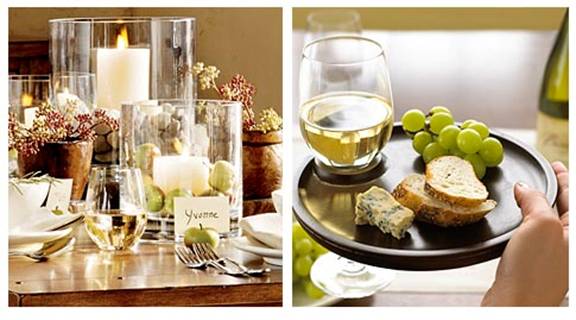How To Pair Wine with Food

For matching up wine and food, it’s best to avoid strong flavors and spicier foods, unless you’re tasting heavy red wines; in this context, lighter fish and snacks are better as palette cleaners. You might also want to include a cheese board, which can feature cheeses like Mozzarella, Munster, and Cheddar without necessarily making it difficult to taste wines.
If serving red wine at a tasting session, you may also want to go with dark chocolate, and particularly types with high cocoa content. Alternatively, cold cuts can be served in small portions, as can Italian deli meats. You can pair up food and wine by regional themes, as well as with established meal pairings - heavier reds go with roasted meats, with Merlot and cuts of venison being a good idea.
Whites are generally better with cheese and fish. It’s similarly possible to put together a platter using tapas - the rule should be, though, that the more types of wine you have to taste, the smaller the portions of food should be. If you’re serving white wine, for example, you may want to pair a Sauvignon Blanc with cheeses and olives, as well as tuna or any fish that’s not too acidic. Rieslings tend to go well with prosciutto and asparagus bites. Dessert wines can also be paired with cheeses and scallops - be careful, though, not to make dips like pate too rich, as they can interfere with the taste of wine.
When putting together a small wine tasting event, it can be practical to just have a few palate cleansers available for guests - these can be used just to clear out the taste of a glass of wine before they move on to the next one. French bread and crackers, as well as light biscuits can serve this purpose well, as can dried fruit.
You may also opt to have no food at all - this can be the case if you’re concerned about losing the taste of expensive or rare wines, and just want to focus on tasting. In this context, you might want to advise your guests to consider eating a meal before the tasting session. In most cases, though, having a few light palette cleansers to hand gives guest the option to mix up their tasting. Pairings with more substantial foods can be a better idea if you’re planning to keep a wine tasting event running throughout an afternoon or evening, and if you’re going to be serving different courses.
Selecting the right wines to go with each course of food can allow you to move from drier to more sparkling wines. Author Bio: Emily Steves is a food writer who regularly contributes to a range of food and drink websites and blogs. She loves drinking white wine with her meals and experimenting on which foods work best.
If you liked this post, please subscribe to our feed so you'd never miss a recipe or article again!









No comments :
Post a Comment